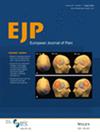A Model of Body Perception Disturbances in Chronic Limb Pain: The Predictive Role of Kinesiophobia, Depersonalization and Symptom Severity
Abstract
Background
Body Perception Disturbances (BPD) are common in chronic limb pain conditions characterised by negative feelings toward the limb and a reduced sense of agency. Prior research has focused on isolated associations between psychological factors, pain hypersensitivity and BPD. Therefore, an integrated examination of the interconnections between these variables within a theory-driven model is necessary.
Methods
The model hypothesises that pain hypersensitivity (hyperalgesia, allodynia), directly linked with BPD (assessed by the Bath-BPD and Neurobehavioral questionnaires) or indirectly, via symptom severity [assessed by complex regional pain syndrome (CRPS) severity score]; coping strategies (depersonalization, kinesiophobia) and psychological symptoms (somatization, depression) are directly related to BPD; and BPD is associated with pain severity and Quality of Life (QoL).
Results
The model was examined using a path analysis of 92 patients with chronic limb pain. Results indicate that depersonalization was directly linked with the Bath-BPD (β = 0.50, p < 0.001), and depersonalization and kinesiophobia with the Neurobehavioral (β = 0.24, p = 0.010; β = 0.22, p = 0.020, respectively). CRPS severity score accounts for the associations between hyperalgesia intensity and BPD and is directly related to the Bath-BPD (β = 0.25, p = 0.014), Neurobehavioral (β = 0.24, p = 0.037), pain (β = 0.28, p = 0.014) and QoL (β = −0.34, p = 0.001). The Bath-BPD marginally associated with QoL (β = −0.20, p = 0.052) but not with pain severity.
Conclusions
The theory-driven model fits the data, suggesting that psychological copying strategies play a dominant role in BPD. The symptom severity explains the associations between pain hypersensitivity and BPD and is directly linked to BPD, pain and QoL. The model revealed potential mechanisms underlying BPD and its associated clinical outcomes.
Significance Statement
This study is the first to use path analysis to examine the predictors and effects of Body Perception Disturbances (BPD) in chronic limb pain. Results identified depersonalization and kinesiophobia as key psychological predictors of BPD, while hyperalgesia has no direct effect. The Complex Regional Pain Syndrome (CRPS) severity score is negatively associated with BPD, pain and quality of life. Findings emphasise the role of dysfunctional psychological processes in BPD and suggest that targeting these processes and reducing CRPS symptoms may improve BPD and treatment outcomes.


 求助内容:
求助内容: 应助结果提醒方式:
应助结果提醒方式:


